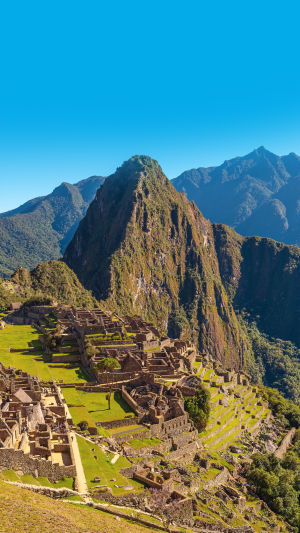Machu Picchu, the famous ruins of the Inca Empire in pre-Columbian Peru, means "ancient mountain top" in Inca and is also known as the "lost city".
Located 75 kilometers northwest of Cusco in present-day Peru, the ruins cover an area of about 5 square kilometers and are located on a ridge between 2,350 and 2,440 meters above sea level, also known as one of the New Seven Wonders of the World.
It is presumed that Machu Picchu was built in the 15th century during the heyday of the Inca Empire, when it had 6 million people, advanced non-ferrous metal smelting and processing technology, and could produce first-class cold weapons, as well as a fortress as dangerous as Machu Picchu to defend.
Later, after the Spanish colonists broke into the Inca Empire, for a short period, the empire died out and the Inca civilization of Machu Picchu was lost.
Of course, this is only a speculation, because at that time the Incas did not master the skills of writing, except for this ancient city, no word was included in the history books, thus the demise of the empire has become a mystery, mysterious and unknowable.
With the demise of the empire, the ancient city remained untouched for 400 years, with only soaring mountain eagles witnessing its majesty.
It was not until July 24, 1911, that the American historian and professor at Yale University brought Machu Picchu to the attention of the Western world.
He was taken to Machu Picchu by locals who knew the area well and discovered the highland citadel, covered by white clouds and dense forests, among the mountains. A book was also written, "The Lost City of the Incas", and the ancient city has been discovered by the world ever since.
Why did the powerful empire build such a castle in the sky as Machu Picchu? The location of the building, and its difficulty, were all burdens that could not be carried by the productivity level of the time.
For many years, archaeologists have generated numerous speculations about this amazing ancient city.
The city of Machu Picchu, covering an area of about 5 square kilometers, 1000 meters long and 500 meters wide, is divided into two major parts: the terraces and the urban area.
The periphery of the city is an agricultural area formed by layers of terraces. The city is divided into an upper city and a lower city, with the upper city slightly higher than the lower city, with the central square as the boundary.
Machu Picchu's buildings are all built with boulders, with no trace of mud to be seen. The boulders are cut very precisely and stacked so tightly that not even a piece of card can be stuffed in. This is the reason why Machu Picchu and other Inca sites are still standing today.
After investigation, it was learned that thousands of huge granite rocks came from a quarry 600 meters down the mountain. No one has yet understood how the Inca civilization was able to move the 20-ton boulders to the top of Machu Picchu. There are still many unanswered questions about the unwritten Inca Empire.





